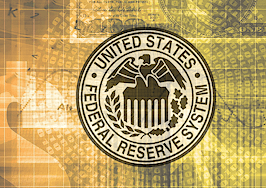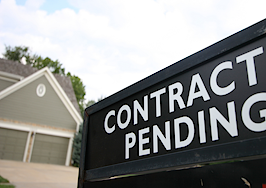- Since the ARM's invention, there has been no period of sustained, steep increase in short-term rates. We won't get away with that forever.
It has been a while since adjustable-rate mortgages (ARMs) were topical.
Adjustable-rate mortgages have been a sleepy market ever since the Fed went to zero eight years ago, at about the same time that extensive ARM abuse in the bubble stopped. And their basic structures are far older than the experience of most borrowers today.
Where did ARMs come from?
Modern ARMs were invented in 1980 to protect banks and savings-and-loans companies (S&Ls) against the hyper-active Paul Volcker-led Fed. Short-term rates then ran way up into the teens, as did the cost of money to banks. Lenders had to have some way to protect themselves by transferring the cost of rising rates to borrowers.
Interest rates have fallen ever since, which has distorted the consumer view of ARMs. Since their invention, there has been no period of sustained, steep increase in short-term rates.
We are not going to get away with that forever.
How do you know where rates will go?
ARMs adjust based on an “index” of short-term rates plus a “margin,” a contractual life-of-loan spread over the index. Ever since 1980, three indices have been predominant, one falling into disuse: 1-year T-bills, one-year LIBOR (London Interbank Offered Rate), and COFI (cost of funds index).
COFI
COFI in full is the “11th FHLB District Cost of Funds” — the average cost of deposits to West Coast S&Ls. That’s the one we don’t see often today. Its sample of short-term rates is too small and too local to be trusted by the global institutions that buy U.S. securitized mortgages today.
Its movement relative to the Fed has always been slow to rise and slow to fall. It was last above 2.00 percent in late 2009, and has been 0.6-something percent for the last two years.
It will still lag the Fed; borrowers tied to old COFI loans need not be alarmed and have some time to refinance to something fixed.
1-year T-bills
The old-reliable still is: 1-year T-bills. The index value in recent years fell to unthinkable levels, 0.10 percent. Its typical margin has been 2.75 percent, consumers paying less than 3 percent.
The 1-year moves in mechanical anticipation of the Fed. In 2015 it rose to 0.25 percent as the Fed said it would at last hike the cost of money, which had been “0 percent-.25 percent” from 2008 until the first hike last December.
One-year T-bills all through 2016 have been in jittery, trading between 0.50 percent and 0.75 percent, anticipating the Fed’s next hike; a 2.75-percent margin means consumers are adjusting up this year to 3.50 percent or a little less.
LIBOR
The oddball has always been one-year LIBOR — the rate at which banks outside the U.S. trade dollar reserves among each other.
LIBOR has done some strange things. First, it is subject to volatility due to worries about systemic bank credit — any bank panic and LIBOR will temporarily rocket. Then, a half-dozen years ago we learned that the bankers reporting LIBOR values to the British Bankers Association each morning at 11 in London had cooked their books in collusion.
Once that ring was broken up, LIBOR fell like COFI — below 2.00 percent in 2009, but since has been volatile: to 0.72 percent in 2011, back up to 1.06 percent in 2012 (coincident with euro trouble), and back down to 0.56 percent at the end of 2014.

The 1-year Libor rate throughout the past several years.
Since that bottom, LIBOR has entered a sustained increase: 0.98 percent by year-end 2015 and now 1.56 percent. Add the usual LIBOR margin of 2.25 percent and consumers are receiving change notices to 3.875 percent this month (always rounded up).
The cause or the increase is murky. Some say new regulations involving U.S. money market funds. Others say not — the rise is driven by newly honest reporting. Whatever, it is not caused by normal anticipation of Fed hikes.
I’ll conclude with one unknown and one known: no one knows how far up LIBOR may run. But we do know that it’s a lousy index for U.S. mortgage consumers. I’ve made that argument since 1980. LIBOR is a synthetic index subject to unpredictable pressures.
If you have a choice and an ARM is right for you, stick with the T-bill index. We know exactly what those are and how they behave.
Lou Barnes is a mortgage broker based in Boulder, Colorado. He can be reached at lbarnes@pmglending.com.












